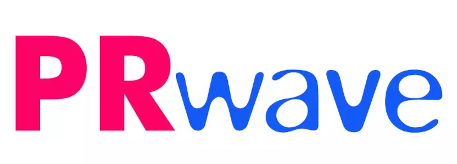 Widening Skills Gap, IT’s “APPetite”, Experience-Centric Everything and More
Widening Skills Gap, IT’s “APPetite”, Experience-Centric Everything and More
CA Technologies (NASDAQ: CA) today announced its top five IT predictions for 2014.
“In 2014, IT will drive stronger engagement models between the business and the services it delivers,” said John Michelsen, chief technology officer, CA Technologies. “CIOs are getting more comfortable giving up control while providing an end-to-end service delivery model, tying in all the required elements and technologies to create an integrated user experience. By focusing on delivering systems of engagement through mobility and relying more confidently on application performance management, IT is now moving more strongly into the role of a trusted advisor and service broker in this brave new world of dynamic IT.”
Michelsen predicts IT organizations will see the following in 2014:
1. A Mounting Skills Crisis: While organizations were quick to adopt and invest in social, mobile and cloud technologies, the unprecedented rise of these technologies unleashed tremendous disruption in the enterprise. However, to truly unleash the business benefits promised by these powerful assets, a dramatic shift in the culture and skills base within the enterprise is required.
Big Data demands a new breed of data scientists, and advancements in mobility, social, and sensing technologies rely on resetting the design and architecture of applications and user interfaces. These are highly specialized skills currently lacking and impossible to recruit completely within any one organization.
Experts believe that nearly all of the 30 fastest-growing occupations in the next decade will demand workers skilled in science, technology, engineering and math (STEM). But the supply of these highly skilled workers is not growing fast enough to meet the demand. One study* predicts that by 2018 in the U.S. alone there will be three million fewer workers with college technical degrees than needed by enterprises. By investing in tailored programs for different age groups and grade levels and creating opportunities for youth to excel in STEM, a new generation of innovators and leaders will be created.
The companies that take a proactive approach to understanding and managing this skill shortage—by embracing an open approach to community-based development in the short term and investing in technical education in the long term—will emerge as winners.
2. IT Gains an “APPetite” and Fuels the API Economy: Widespread adoption of cloud computing, mobility and other technical advances has driven fundamental changes in how applications are created and deployed.
No longer monolithic and hosted on a single platform, applications can now be rapidly assembled from in-house and/or provider-built components which reside independently, either on-premise (on any hardware platform), in a cloud, or both. In such an environment, the CIOs that move up the value chain to focus more on managing apps and services will increase their company’s ability to drive business success.
More than ever before, IT is primed to become application assemblers and brokers of business services. As SaaS, PaaS and IaaS provide turnkey access to compute capacity, IT will increasingly focus on composite business applications—rather than a buy-build-manage model—to achieve new levels of speed, innovation, performance and cost/risk efficiencies. To successfully make this transition, CIOs will need to increase their leverage of service-oriented style architectures through more efficient use and better control of APIs (Application Programming Interfaces).
3. Rise of Experience-Centric Everything: Both customers and employees are embracing disruptive technologies faster than businesses. Organizations today are no longer in control of their brands.
Today, IT services are all about the consumer. This is driving dramatic changes in how applications are developed, which will lead to a rise in experience-driven design and, in turn, necessitate DevOps-style development, a method of developing software where developers and IT operations professionals work together to speed up the delivery of new business services.
There will be increased use of sensing technologies available in most modern mobile and wearable devices. “Mobile First” development will give way to “Experience First” multi-channel approaches that will leverage smartphones, tablets, smart TVs, gaming consoles, laptops, or any other platform that a consumer is likely to be using when they want a product or need a service.
The management of mobile/social IT will become less about managing and securing the devices themselves, and more about managing and securing the mobile applications and mobile data, all while delivering a compelling and engaging user experience.
4. Demand for Accelerated Delivery: We now have a new generation of self-informed consumers who are very comfortable sharing experiences and information via social media. Consumer and employee demand for more engaging experiences will continue to increase at a dramatic pace as they become more comfortable with experience-driven, multi-channel applications and technologies such as sensing. Barriers to entry have been removed—competition has gone from nowhere to everywhere overnight.
In this reality, social, mobility, cloud and DevOps are becoming one movement. These evolved experiences will drive a need for the same level of agility from every business. This fuels the DevOps movement that necessitates the reconstitution of traditional frameworks like ITIL (Information Technology Infrastructure Library), and extracts their most valuable concepts and adjusts them for modern, agile development.
5. Security Tops the IT and Business Agenda: Mobility, social, DevOps and cloud adoption have effectively opened the enterprise and invited new business risk into today’s workplace. The rapidly expanding and collaborative open enterprise diminishes IT control and requires the CIO and CSO to find the delicate balance of enabling and protecting the business.
Ensuring that security is convenient— simple, yet automated on the back end—for users is one way to ensure productivity and business enablement. Coupled with a “predict, prevent, and prepare” for a possible breach approach, and IT will gain a good start on balancing business enablement with business protection.
Runner Up: Cloud is a Given. The buzz of “the cloud” dims significantly in 2014 as people realize it’s just the way of doing business. In fact, cloud is now the key enabler for other disruptive technologies like social and mobility. Though cloud computing has become mainstream, many businesses are still in the early stages of adoption. These businesses will also be affected by the mounting skills crisis which could lead to wider adoption of service-provider hosted public and private clouds.
* Recovery: Projections of Jobs and Education Requirements through 2020, Georgetown University, Center on Education and the Workforce, June 2013.




